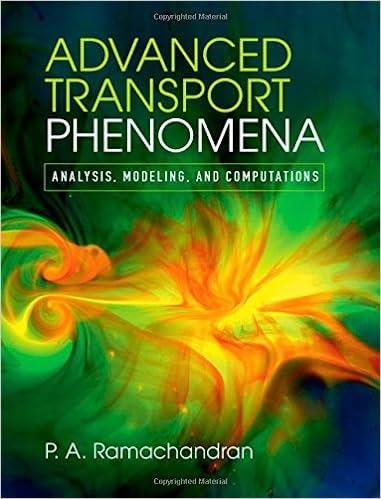There is nothing magical about the eigenfunctions being orthogonal. This can be shown by integration by parts
Question:
There is nothing magical about the eigenfunctions being orthogonal. This can be shown by integration by parts twice.
Consider two eigenfunctions \(F_{n}\) and \(F_{m}\), both of which satisfy the following equations:
\[\begin{equation*}\frac{d^{2} F_{n}}{d x^{2}}=-\lambda_{n}^{2} F_{n} \tag{11.79}\end{equation*}\]
and
\[\begin{equation*}\frac{d^{2} F_{m}}{d x^{2}}=-\lambda_{m}^{2} F_{m} \tag{11.80}\end{equation*}\]
Obviously \(\lambda_{n}\) and \(\lambda_{m}\) are two distinct eigenvalues. Also assume that some homogeneous boundary conditions apply for both \(F_{n}\) and \(F_{m}\) at \(x=0\) and \(x=1\) (the end points assuming dimensionless variables).
Now consider the integral
\[\begin{equation*}\int_{0}^{1}\left[F_{m} \frac{d^{2} F_{n}}{d x^{2}}\right] d x=-\lambda_{n}^{2} \int_{0}^{1} F_{m} F_{n} d x \tag{11.81}\end{equation*}\]
Show that this follows from Eq. (11.79).
Integrate this by parts twice. Then use the homogeneous boundary condition. Then use Eq. (11.80) to get rid of the second-derivative term for \(F_{m}\). This involves a lot of algebra, but all of it is elementary. Finally show that the resulting expression is \[\begin{equation*}\left(\lambda_{m}^{2}-\lambda_{n}^{2}\right) \int_{0}^{1} F_{m} F_{n} d x=0 \tag{11.82}\end{equation*}\]
Since \(\lambda_{m}\) is not equal to \(\lambda_{n}\) (the eigenvalues are distinct), we conclude that the functions \(F_{m}\) and \(F_{n}\) are orthogonal to each other. Generalization of this forms the basis of the SturmLiouville theory for eigenfunctions indicated in Problem 2 above.
Problem 2:
The fact that the eigenfunctions are orthogonal can be verified easily using the symbolic calculations in MATLAB or MAPLE. But the underlying theory is based on the SturmLiouville problem. You may wish to explore this further by looking at some books.
State what a Sturm-Liouville equation is.
Prove that the eigenfunctions of this equation are orthogonal with the weighting factor.
State how to identify the weighting function directly from the Sturm-Liouville equation in its general form.
Step by Step Answer:

Advanced Transport Phenomena Analysis Modeling And Computations
ISBN: 9780521762618
1st Edition
Authors: P. A. Ramachandran





